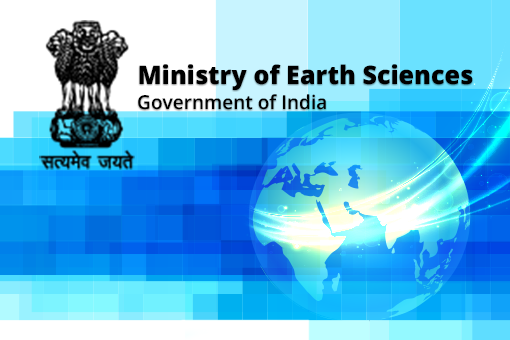Extreme Weather Conitions

India Meteorological Department (IMD)has issued ‘Statement of Climate of India during 2020’ on 4th January 2021. The report contains the details of extreme weather events observed within the country during 2020 including extreme temperatures. The detailed report is given in Annexure I. The highlights of the report are as follows:
Heat wave conditions :Heat wave conditions were rather moderate during the season.
- 13 and 14 April : Over isolated pockets of Gujarat State
- On 21 May : Over Saurashtra & Kutch and west Rajasthan.
- During 22-29 May : On most of the days in Rajasthan, Vidarbha, Madhya Pradesh, on many days in Haryana, Chandigarh, & Delhi, Telangana, Uttar Pradesh, on a few days in Gujarat, Marathwada and on isolated days in Madhya Maharashtra, Chhattisgarh and coastal Andhra Pradesh.
- During 25-28 May : Severe heat wave conditions were also observed in isolated pockets of west Rajasthan, Haryana, Delhi & East Uttar Pradesh and in some parts of Rajasthan.
- During 15-18 June : Heat wave conditions prevailed over some parts of West Rajasthan, which was severe at one or two places on 16 June.
Cold Wave conditions :
- In the month of January, cold wave conditions prevailed over parts of Saurashtra & Kutch, Haryana, Chandigarh & Delhi, Jammu & Kashmir, Jharkhand, Bihar, Chhattisgarh, Punjab, Himachal Pradesh, Odisha, east and west Rajasthan and West Uttar Pradesh on isolated days.
- In the month of February, cold wave conditions prevailed during the first fortnight (1-13 February) of the month over parts of Haryana, Chandigarh & Delhi and Punjab on many days and over parts of Uttarakhand, Odisha, East and West Madhya Pradesh, Chhattisgarh, Bihar and Jharkhand on few days. During the above period, severe cold wave conditions prevailed on one day each in Punjab and Odisha.
- Cold day conditions at many places with severe cold day conditions at isolated places occurred over Haryana, Chandigarh & Delhi and West Uttar Pradesh during 15-18 and 29-31 December and over East Uttar Pradesh during 19-22 December. The cold day conditions at isolated places occurred over Bihar during 19-23 December over north Madhya Pradesh during 19-20 and 29-31 December.
Extreme Rainfall :
- Episodes of heavy to very heavy and extremely heavy rainfall events occurred over different parts of the country during the monsoon season of 2020. Due to these events parts of Himachal Pradesh, Maharashtra, Kerala, Uttar Pradesh, Assam, Bihar and Telangana suffered flooding.
The details of extreme weather events are shared with public, state governments and also NDMA for preparing for proper disaster management efforts.
India is one of the most vulnerable country for the extreme weather events.The Germanwatch Global Climate Risk Index (CRI) is an analysis based on one of the most reliable data sets available on the impacts of extreme weather events and associated socio-economic data.. The index calculated for any given year is based on the extreme weather events such as storms, floods and heatwaves occurred in that year. The ranking of India based on CRI since 2010 is given in the table below. From the table it is observed that India is ranked within 20 during most of the years.
| Table-1 Climate Risk Index Rank (India) Since 2010 | |||
| Year | Year Rank | Period | 20 Year Rank |
| 2010 | 31 | 1991-2010 | 20 |
| 2011 | 17 | 1992-2011 | 22 |
| 2012 | 46 | 1993-2012 | 18 |
| 2013 | 3 | 1994-2013 | 17 |
| 2014 | 10 | 1995-2014 | 16 |
| 2015 | 4 | 1996-2015 | 14 |
| 2016 | 6 | 1997-2016 | 12 |
| 2017 | 14 | 1998-2017 | 14 |
| 2018 | 5 | 1999-2018 | 17 |
| 2019 | 7 | 2000-2019 | 20 |
It is also observed that extreme events are all showing increasing trends in recent decades in line with other parts of the globe which is mainly attributed to climate change. As per the climate change projections made by IPCC, there is high probability for these extreme events to increase in coming years. The country already has a robust early warning and response system for extreme weather and climate events based on scientifically generated weather and climate information.
The number of people who died in the extreme weather events for the year 2019 and 2020 are given in the Appendix II & III respectively. As compared to 2019 the loss of life due to extreme weather events are less in the year 2020.
(e)The details of collaboration in various fields and the MoU signed by Govt. of India with other countries and foreign government agencies are as follow;
- TheMoUfor Scientific and Technical Cooperation between Qatar Civil Aviation Authority, State of Qatar and MoES, Govt. of India.
Targeted milestones (next 2 to 3 years)
Capacity building activities related to the seamless coordination of disaster management activities with an effective, efficient and with comprehensive plans of public understanding and preparedness.
- TheMoU for Technical Cooperation in Earth Observations and Earth Sciences between the National Oceanic and Atmospheric Administration (NOAA), USA and MoES.
There are 5 active implementation agreements and IMD is responsible for Tropical cyclone activity part.
Targeted milestones (next 2 to 3 years):
- Customization of Hurricane Weather Forecast (HWRF) model of NOAA has been customized and implementation of real time tropical cyclone forecast (Track, intensity, wind & Rainfall).
- Customization of tailor made real time weather forecast products of extreme rainfall and impact based forecast
- Cooperation with World Meteorological organisation:
- South Asia Flash Flood Guidance System (SAsiaFFGS)
Targeted milestones (next 2 to 3 years)
Collaboration with WMO has helped in technology transfer from Hydrologic Research Centre (HRC), USA to India for South Asia Flash Flood Guidance System commencing from monsoon season 2020 and will continue further.
It helped to issue impact based forecast and risk based warning during monsoonal flood situations like heavy rainfall over Mumbai, Heavy rainfall over Dwarka and Heavy rainfall over Bhopal as few examples.
- Regional Specialized Meteorological Centre (RSMC)
Targeted milestones (next 2 to 3 years)
Collaboration helped India to demonstrate as a Regional Specialized Meteorological Centre (RSMC) for tropical cyclone (one of the sixth centre in the World) in providing leadership in the region. The collaboration helped in exchange of meteorological data from Bay of Bengal (BoB) and Arabian Sea countries to IMD and hence improved monitoring and forecast.
- WMO Severe Weather Forecast Demonstration Programme (SWFP):
Targeted milestones (next 2 to 3 years)
This collaboration in coming 2 to 3 years will further support India to recognise as a regional leader to provide severe weather guidance to the member countries India, Bangladesh, Myanmar, Thailand, Bhutan, Nepal, Pakistan, Sri-Lanka and Maldives). In return, India got access to high resolution NWP model and location specific forecast products from European Centre for Medium Range Weather Forecasts (ECMWF), National Centre for Environmental Prediction (NCEP), UK Met Office (UKMO), Japan Meteorological Agency (JMA), Korean Meteorological Agency (KMA), China Meteorological Administration (CMA). Also satellite based nowcast (very short range forecast of convective activity like thunderstorm rainfall) was made available for use in the region. This 5 day forecast will help the government in policy and planning.




Appendix II
| *Number of death due to extreme weather events in the year 2019
| ||||||||||||
| State | COLD WAVE | CYCLONIC STORM | DUST STORM | FLOODS & HEAVY RAINS | GALE | HAIL STORM | HEAT WAVE | LIGHTNING | SNOW FALL | SQUALL | THUNDER STORM | Grand Total |
| Andhra Pradesh | 45 | 45 | ||||||||||
| Assam | 94 | 15 | 11 | 120 | ||||||||
| Bihar | 19 | 306 | 293 | 72 | 690 | |||||||
| Chhattisgarh | 4 | 2 | 17 | 23 | ||||||||
| Goa | 1 | 1 | ||||||||||
| Gujarat | 27 | 10 | 37 | |||||||||
| Himachal Pradesh | 26 | 8 | 34 | |||||||||
| Jammu & Kashmir | 22 | 0 | 57 | 3 | 82 | |||||||
| Jharkhand | 13 | 5 | 13 | 2 | 126 | 159 | ||||||
| Karnataka | 30 | 21 | 8 | 59 | ||||||||
| Kerala | 106 | 1 | 13 | 3 | 123 | |||||||
| Madhya Pradesh | 12 | 21 | 2 | 30 | 65 | |||||||
| Maharashtra | 7 | 169 | 53 | 64 | 2 | 295 | ||||||
| Manipur | 3 | 3 | ||||||||||
| Odisha | 64 | 24 | 1 | 89 | ||||||||
| Rajasthan | 25 | 82 | 3 | 5 | 15 | 130 | ||||||
| Sikkim | 1 | 1 | ||||||||||
| Tamil Nadu | 18 | 1 | 19 | |||||||||
| Telangana | 10 | 2 | 66 | 7 | 85 | |||||||
| Tripura | 1 | 1 | ||||||||||
| Uttar Pradesh | 240 | 32 | 9 | 26 | 64 | 371 | ||||||
| Uttarakhand | 39 | 39 | ||||||||||
| West Bengal | 7 | 3 | 5 | 17 | 32 | |||||||
| Grand Total | 291 | 71 | 25 | 996 | 4 | 2 | 495 | 202 | 65 | 3 | 349 | 2503 |
Appendix III
| * Number of deaths due to extreme weather events in the year 2020
| ||||||||||||
| State | COLD WAVE | CYCLONIC STORM | DUST STORM | FLOODS & HEAVY RAINS | GALE | HAIL STORM | HEAT WAVE | LIGHTNING | SNOWFALL | SQUALL | THUNDER STORM | Grand Total |
| Andhra Pradesh | 9 | 21 | 20 | 50 | ||||||||
| Arunachal Pradesh | 11 | 11 | ||||||||||
| Assam | 129 | 129 | ||||||||||
| Bihar | 45 | 54 | 2 | 280 | 381 | |||||||
| Gujarat | 29 | 8 | 37 | |||||||||
| Harayana | 1 | 1 | ||||||||||
| Himachal Pradesh | 38 | 4 | 42 | |||||||||
| Jammu & Kashmir | 13 | 3 | 5 | 17 | 38 | |||||||
| Jharkhand | 16 | 4 | 5 | 6 | 122 | 153 | ||||||
| Karnataka | 16 | 1 | 12 | 29 | ||||||||
| Kerala | 72 | 2 | 74 | |||||||||
| Madhya Pradesh | 10 | 72 | 7 | 89 | ||||||||
| Maharashtra | 4 | 50 | 23 | 1 | 78 | |||||||
| Meghalaya | 6 | 6 | ||||||||||
| Odisha | 4 | 16 | 16 | 36 | ||||||||
| Rajasthan | 2 | 14 | 18 | 3 | 37 | |||||||
| Sikkim | 5 | 1 | 1 | 7 | ||||||||
| Tamil Nadu | 12 | 9 | 21 | |||||||||
| Telangana | 61 | 6 | 67 | |||||||||
| New Delhi (UT) | 1 | 1 | ||||||||||
| Uttar Pradesh | 88 | 48 | 53 | 167 | 356 | |||||||
| Uttarakhand | 1 | 4 | 5 | |||||||||
| West Bengal | 86 | 3 | 3 | 92 | ||||||||
| Grand Total | 152 | 115 | 14 | 610 | 4 | 2 | 237 | 22 | 6 | 578 | 1740 | |
*(The number of deaths reported due to extreme weather events in Appendix-II & III are based on media reports only)
This information was given by Dr. Harsh Vardhan, Union Minister for Science & Technology, Earth Sciences and Health & Family Welfare in a written reply in Lok Sabha today.



